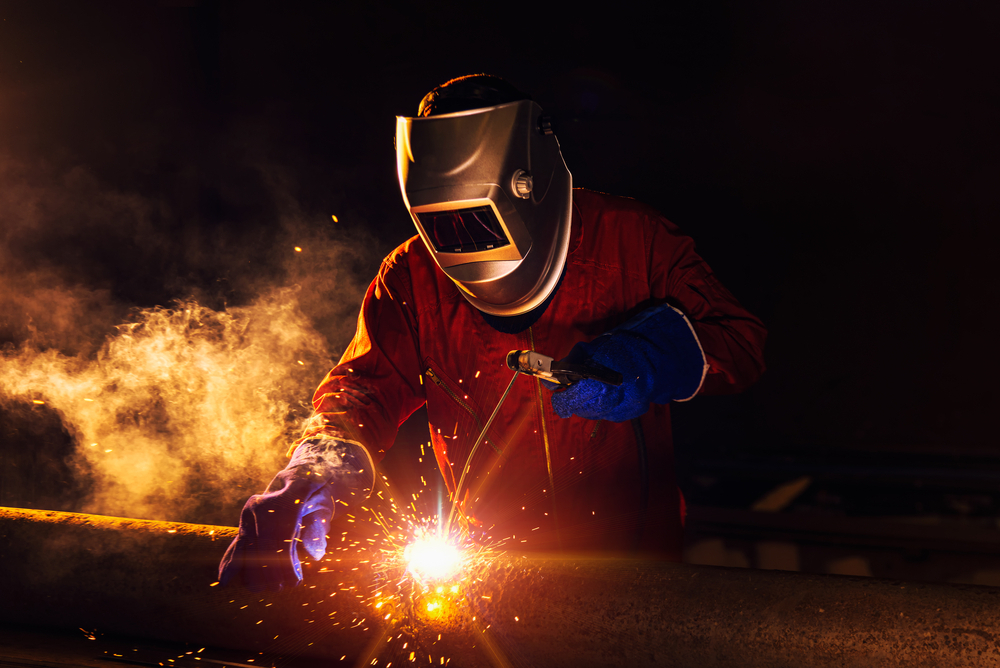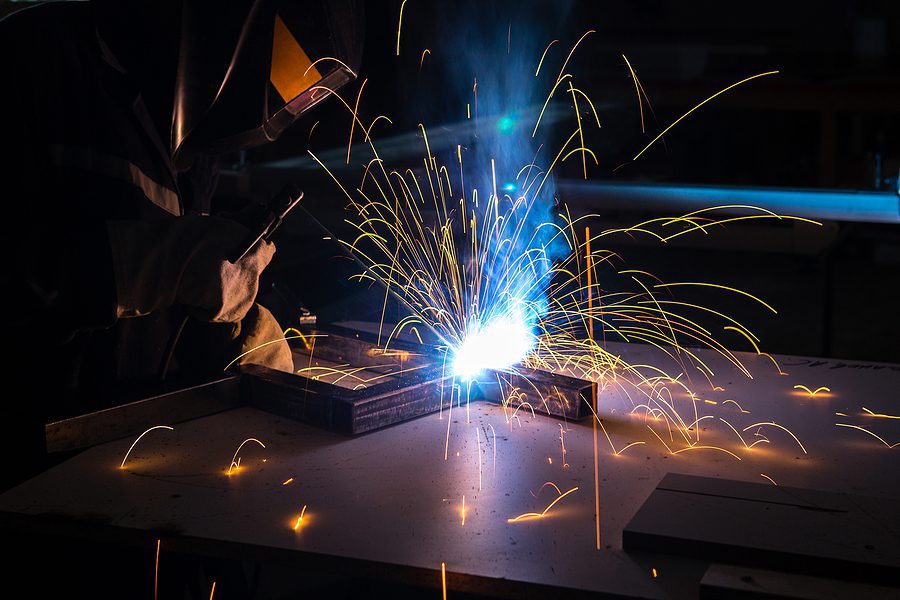Steps for perfect fusion with Montana Mobile Welding and Repair Belgrade Fabrication
Everything about Welding: Secret Insights Into Techniques and Ideal Practices for Success
Welding encompasses a range of techniques, each fit for specific materials and applications. Recognizing these methods, such as GMAW, SMAW, and TIG, is important for accomplishing ideal outcomes. Moreover, the best devices and safety methods can not be forgotten. As preparation and repairing play vital roles in the welding process, understanding these elements can substantially improve the top quality of the end product. What are the key variables that ensure a successful weld?
Understanding Different Welding Strategies
Welding strategies include a selection of methods, each suited to particular applications and materials. Among the most usual strategies are Gas Metal Arc Welding (GMAW), Protected Metal Arc Welding (SMAW), and Tungsten Inert Gas Welding (TIG) GMAW, additionally called MIG welding, is prominent for its rate and versatility, making it excellent for thin products. SMAW, or stick welding, is preferred for its simplicity and effectiveness in exterior settings, particularly with thicker steels. TIG welding offers precision and control, making it suitable for complex work and non-ferrous metals (Montana Mobile Welding and Repair Belgrade Welding). Each strategy has its one-of-a-kind benefits and considerations, permitting welders to choose the most effective method based upon the job's requirements, material type, and wanted outcomes. Recognizing these strategies is necessary for successful welding
Vital Welding Tools and Devices
While various welding strategies call for particular skills, the best equipment and tools are similarly crucial for achieving high quality results. Necessary welding tools consists of welding makers, which differ depending on the strategy-- such as MIG, TIG, or stick welding. Safety gear, including safety helmets, aprons, and gloves, warranties safety and security and comfort throughout the procedure. On top of that, components and clamps assist safeguard materials in location, making sure precision in welds. Consumables like welding poles, cable, and protecting gas are also crucial components that influence the high quality of the weld. Tools such as mills and cutters facilitate surface prep work and post-weld completing, contributing to an expert end result. Investing in premium devices inevitably enhances the efficiency and performance of welding tasks.
Safety And Security Practices in Welding
Correct safety and security practices are necessary in the welding sector to protect employees from potential dangers. Welders must wear proper personal safety tools (PPE), including headgears with correct shading, handwear covers, and flame-resistant clothing. Ample air flow is vital to lower exposure to hazardous fumes and gases created throughout the welding process. Furthermore, employees should be learnt the correct handling of welding equipment to avoid accidents. Fire precaution, such as keeping combustible materials away from the welding area and having fire extinguishers easily available, are essential. Normal evaluations of devices and work spaces can aid identify possible risks prior to they result in mishaps. By adhering to these security techniques, welders can produce a much safer working atmosphere and decrease risks connected with their profession.
Preparing Materials for Welding
Preparing products for welding is a crucial step that significantly influences the high quality and honesty of the end product (Belgrade Welding). Appropriate preparation involves cleaning up the surface areas to remove contaminants such as oil, dust, and rust, which can jeopardize the weld. Methods such as grinding, fining sand, or making use of solvents are typically utilized to achieve a clean surface. Additionally, making sure that the products mesh well is important; voids can result in weak welds. It's also vital to think about the alignment and positioning of the parts, as this will certainly impact the simplicity of welding and the last outcome. Selecting the suitable filler product and guaranteeing compatibility with the base steels is crucial for achieving strong, resilient welds.
Tips for Getting High-Quality Welds
Accomplishing high-grade welds needs interest to information and adherence to ideal techniques throughout the welding process. Correct joint preparation is crucial, making sure surfaces are totally free and clean from impurities. Selecting the appropriate filler material and welding technique based upon the base steels is essential for suitable bonding. Keeping consistent traveling speed and angle while welding can protect against problems and promote harmony. Additionally, controlling warm input is essential; excessive warmth can lead to warping and weakened joints. If required, routinely inspecting the welds during the process allows for prompt adjustments. Lastly, employing appropriate post-weld treatments, such as cleansing and anxiety alleviation, can boost the longevity and honesty of the weld, eventually guaranteeing a successful outcome.
Repairing Typical Welding Issues
Welding often presents difficulties that can affect the top quality and honesty of the last product. Typical problems such as porosity, irregular weld beads, and overheating can develop, each needing go details repairing techniques. Comprehending these troubles is important for welders to boost their abilities and attain perfect results.
Porosity Troubles Clarified
Porosity can often be ignored, it continues to be a vital problem in welding that can jeopardize the stability of an ended up item. Porosity refers to the presence of little gas pockets within the weld bead, which can compromise the joint and lead to premature failing. This problem normally occurs from contaminants, wetness, or incorrect shielding gas insurance coverage during the welding process. To reduce porosity, welders ought to validate that the base products are completely dry and clean, use appropriate protecting gases, and keep consistent welding specifications. Regularly checking the tools and atmosphere can also assist identify prospective issues prior to they manifest in the weld. Dealing with porosity effectively is necessary for attaining solid, resilient welds that meet top quality criteria.

Irregular Weld Beads
Irregular weld grains can greatly influence the top quality and strength of a completed product. Various factors add to this concern, including inappropriate traveling speed, inaccurate amperage setups, and inconsistent electrode angles. When the welder moves as well swiftly, a bead might show up slim and lack penetration, while relocating too slowly can cause excessive build-up. Additionally, utilizing the wrong amperage can result in either damaging or too much spatter, both of which compromise weld stability. The welder's strategy, such as inconsistent lantern movement, can additionally result in irregular bead look. To alleviate these problems, welders must focus on keeping stable, regulated movements and making certain appropriate tools settings to attain uniformity in their welds. Uniformity is key to achieving solid and trustworthy welds.
Getting Too Hot and Bending Issues
Extreme warm throughout the welding procedure can result in substantial overheating and contorting concerns, impacting the architectural integrity of the work surface. These issues frequently show up as distortion, which can endanger alignment and fit-up, making additional setting up testing. Variables contributing to overheating consist of the selection of welding specifications, such as voltage and take a trip rate, along with the type of material being welded. To alleviate these issues, mig brazing welders ought to preserve regular travel speed and proper heat input while monitoring the workpiece temperature. In addition, pre-heating or post-weld warm therapy can help relieve stress and anxieties brought on by quick air conditioning - Fabrication. Regular evaluation and adherence to finest techniques are vital in stopping getting too hot and ensuring the long life and reliability of bonded frameworks
Often Asked Concerns
What Are the Profession Opportunities in the Welding Industry?
The welding sector uses diverse profession opportunities, including placements as welders, designers, examiners, and teachers. Experts can operate in production, building, aerospace, and automobile sectors, profiting from strong need and competitive wages in different roles.
Exactly How Can I Improve My Welding Rate Without Sacrificing Top Quality?
To enhance welding speed without compromising high quality, one must exercise effective techniques, maintain devices, optimize setups, and boost hand-eye control. Regular training and seeking responses can likewise significantly contribute to attaining much faster, top notch welds.
What Accreditations Are Readily Available for Welders?
Various qualifications exist for welders, including those from the American Welding Society (AWS), the National Facility for Construction Education and Research (NCCER), and different industry-specific companies. These credentials improve employability and show ability proficiency.
Exactly How Does Welding Affect the Features of Metals?
Welding influences the residential or commercial properties of steels by changing their microstructure, which can lead to changes in toughness, ductility, and read review firmness. Heat input and cooling rates during the process substantially affect these material attributes.
Can I Weld Dissimilar Metals Together?
